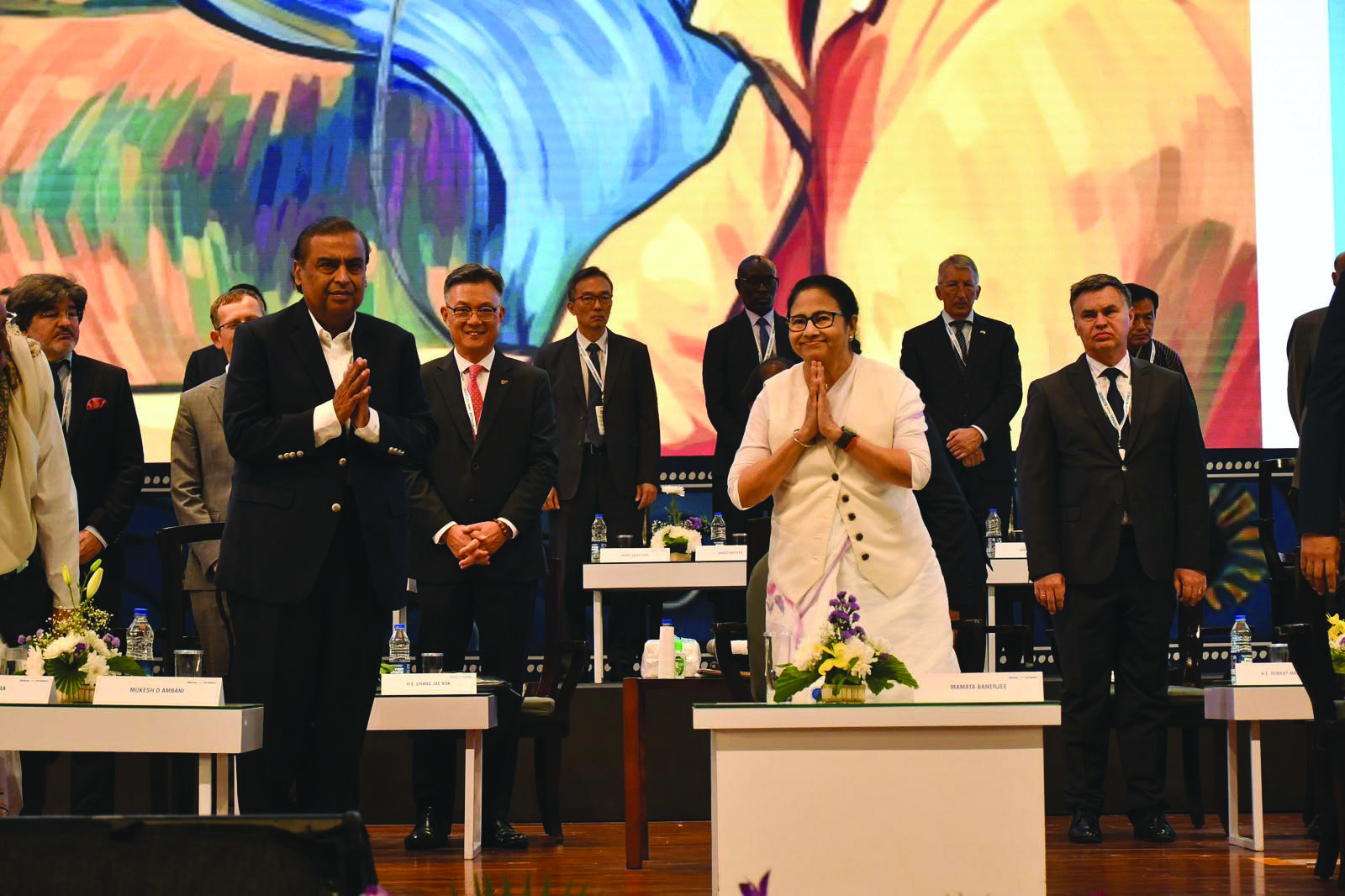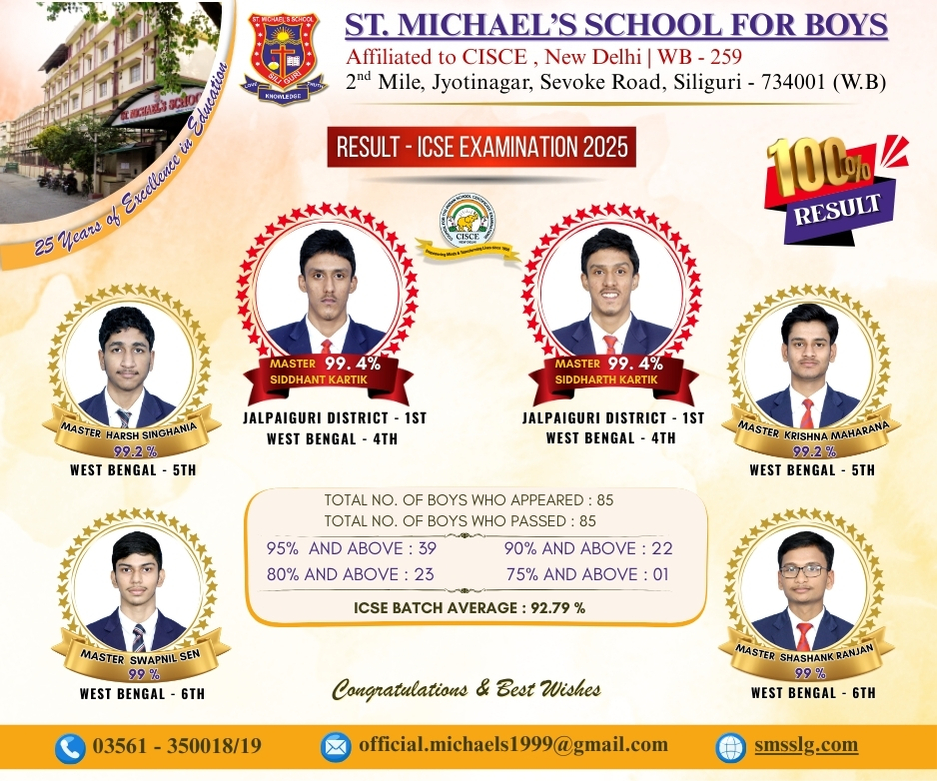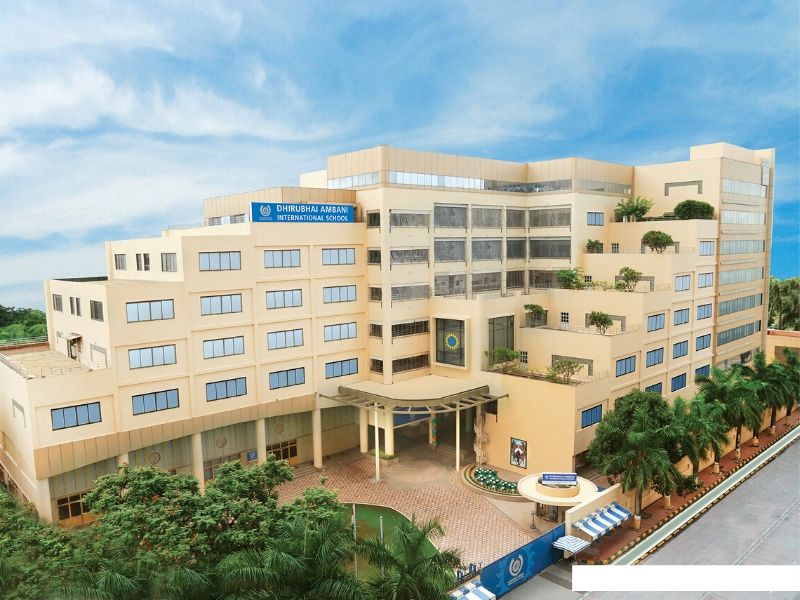Baishali Mukherjee (Kolkata)

Mamata Banerjee (centre) at BGBS 2025
After 34 years of industrial stagnation under communist rule (1977-2011) and during the first two terms (2011-21) of the incumbent Trinamool Congress (TMC) followed by the too prolonged national Covid pandemic shutdown, is the high-potential West Bengal economy on the mend? The Eighth Bengal Global Business Summit (BGBS) 2025, staged on February 5-6, attracted the participation of 5,000 delegates including 25 ambassadors and 200 foreign investors from 40 countries.
Over two days, the state government received investment proposals valued at Rs.4.45 lakh crore and 212 memoranda of understanding (MoUs) and letters of intent for investment in the state (pop.99 million) were signed.
Education MoUs signed during the summit included an agreement between the West Bengal government and the British Council to improve English language learning in 84,000 government schools, reforming university curricula, internationalising higher education, and assisting skill development. Sanjiv Goenka, chairman of the Rs.2,595 crore RP-Sanjiv Goenka Group, announced an investment of Rs.10,000 crore in energy, healthcare, and education. Additionally, Sardar Taranjit Singh, managing director of the Rs.638-crore JIS Group, promised investment of Rs.450 crore, including Rs.200 crore for strengthening JIS University sited in Agarpara (West Bengal). The JIS Group operates 39 education institutions offering 185 programmes to over 45,000 students. It pledged Rs.250 crore for establishing a Rishi Aurobindo University at Mogra in Hooghly district.
Although within government and TMC, there was considerable euphoria about revived interest in the state’s economy and large number of MoUs signed, inevitably, opposition parties are sceptical. BJP leader Amit Malviya described BGBS as an “extravagant spectacle” staged to “mask” the state’s poor economic condition under TMC chief Mamata Banerjee for the past 13 years.
According to Malviya, 21,521 industrial units statewide downed shutters between 2016 and 2021, leading to huge job losses. Citing data of the Corporate Affairs Ministry, he noted that major companies including Britannia, have exited Bengal. Malviya also cited the state’s declining contribution to India’s GDP — from 10.5 percent in 1960-61 to 5.6 percent in 2023-24. And BJP leader of the opposition in the state’s legislative assembly Suvendu Adhikari demanded documents detailing actual investments that had flowed into the state from seven previous business summits and resultant employment generation.
Rising to the occasion, feisty chief minister Banerjee responded that since the BGBS held on January 7-8, 2015, investment valued at Rs.19.5 lakh crore has been made in West Bengal. Moreover, while presenting the state’s Rs.3.4 lakh crore budget on February 12, finance minister Chandrima Bhattacharya said nearly 20 million jobs have been created in industry and other sectors, bringing down the state’s unemployment by 40 percent as a result of which unemployment in West Bengal is 4.14 percent against the national 7.93 percent.
While these figures are impressive, academics in the state are less than impressed. They cite a January 7 Union education ministry report that says the percentage of dropouts from West Bengal’s secondary schools in 2023-24 was 18.75, the highest nationwide. Also, against last year’s 7.9 lakh candidates who wrote the class XII board exams, only 5.09 lakh candidates wrote the exam this year.
Moreover, according to ASER 2024 report only 53.9 percent of Bengal’s class V children can read class II level textbooks, and only 34.3 percent of class V children can do simple division sums. This means 66 percent of children in class V have been over-promoted. Shockingly, almost 30 percent of children in class VIII — one year before they enter high school — can’t read class II textbooks and 66 percent can’t manage simple division sums.
Dismal learning outcomes despite a massive surge in the school education budget — from Rs.975 crore in 2010-11 to Rs.41,153 crore in 2025-26 — is being interpreted as rampant mismanagement and misuse of budgeted education expenditure. West Bengal’s deplorable public schools plagued by poor infrastructure, lack of qualified teachers, and inadequate facilities, are a critical bottleneck for the state’s overall growth.
“A weak foundation in primary and secondary education results in an unskilled workforce, limiting the benefits of higher education advancement and industrial expansion. Without strong schooling, many students, particularly in remote areas, are unable to acquire necessary skills for employment, leading to persistent unemployment and underemployment. This educational disparity has widened socio-economic inequalities in the state and hampered long-term economic progress. The TMC-led state government has failed to strengthen West Bengal’s public school system. Therefore, much of the investment promised in the recent business summit won’t materialise,” predicts Swapan Mandal, General Secretary, Bengal Teachers and Employees Association.























